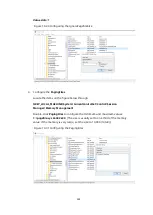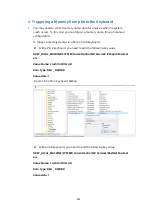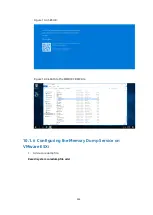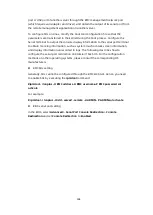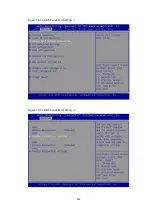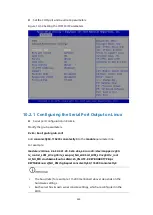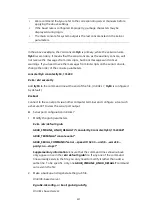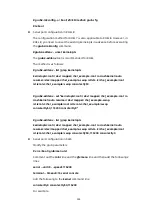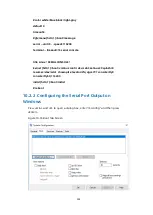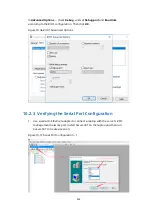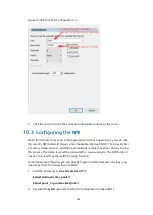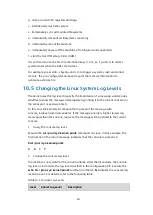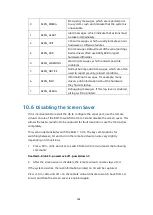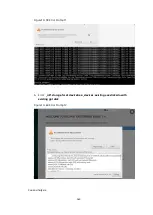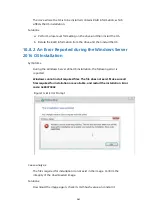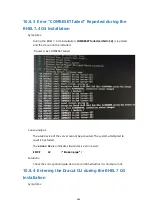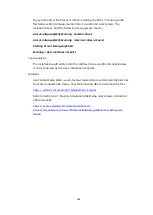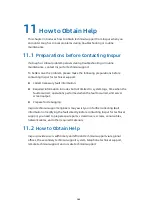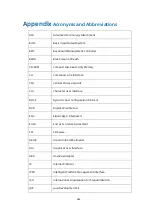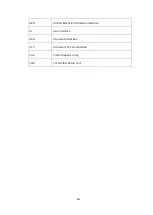
256
10.4
Configuring the Linux Magic SysRq Key
The magic SysRq key is a magical key combination. As long as you press it, the
kernel will respond immediately regardless of the system’s state.
The SysRq facility is one of the best (and sometimes the only) way to determine
what a machine is really doing. It is most useful when the server appears to be
“hung”, and for diagnosing elusive, transient, kernel-related problems. Since
enabling SysRq facility gives someone with physical console access extra abilities,
we recommend you to disable it when not troubleshooting a problem or to ensure
that physical console access is properly secured.
When you test whether the kdump configuration takes effect, executing the
echo
c > /proc/sysrq-triger
command also requires the support of the SysRq key.
1.
Check the current SysRq state.
# cat /proc/sys/kernel/sysrq
2.
If the value is 0, the SysRq key is disabled. Set the value to 1.
The available values in
/proc/sys/kernel/sysrq
are described below:
0 - disable sysrq completely
1 - enable all functions of sysrq
3.
Trigger the SysRq key.
The SysRq key can be triggered using the following key combination in CLI, not
available in GUI:
<Alt> + <PrintScreen> + <CommandKey>
If the keyboard can respond, the SysRq key can also be triggered by executing
the following command:
#echo [CommandKey] > /proc/sysrq-trigger
When a SysRq command is triggered, the kernel will print out the information to
the kernel ring buffer and to the system console. This information is normally
logged via syslog to
/var/log/messages
. However, the OS may be unable to
record logs when it crashes. In this case, we recommend you to collect logs via the
serial port.
As for the <CommandKey>, common SysRq events include:
m - dump information about memory allocation
w - dumps tasks that are in uninterruptable (blocked) state
t - dump thread state information
Summary of Contents for OS
Page 1: ...Inspur Server OS Installation Guide Document Version V2 3 Release Date January 19 2022 ...
Page 16: ...7 Figure 4 1 Server Mgmt ...
Page 17: ...8 Figure 4 2 Configuration Address Source Figure 4 3 BMC IP Setting ...
Page 32: ...23 Figure 4 29 Selecting the OS 4 Check I accept the license terms and click Next ...
Page 37: ...28 Figure 4 35 User Login Screen 10 Enter the desktop and the installation is completed ...
Page 46: ...37 Figure 4 44 Confirming the Installation 9 Wait for the installation to complete ...
Page 49: ...40 Figure 4 47 System UI Management Screen Figure 4 48 Authentication Required Screen ...
Page 57: ...48 Figure 4 57 Selecting Restart Management Agents Figure 4 58 Confirming the Restart ...
Page 68: ...59 Figure 5 12 Selecting INSPUR 8204 4 GB Figure 5 13 INSPUR 8204 4 GB Configuration Screen ...
Page 75: ...66 Figure 5 21 Setting System Date Figure 5 22 Setting System Time ...
Page 85: ...76 Figure 5 36 Language Selection Screen 5 The INSTALLATION SUMMARY screen appears ...
Page 102: ...93 Figure 5 58 Authentication Required Screen Figure 5 59 System Customization Screen ...
Page 109: ...100 Figure 5 67 Selecting Restart Management Agents Figure 5 68 Confirming the Restart ...
Page 121: ...112 Figure 6 16 Setup Wizard Screen 3 Select the language you like to use and click Continue ...
Page 122: ...113 Figure 6 17 Selecting the Language 4 Set DATE TIME KEYBOARD and LANGUAGE SUPPORT ...
Page 128: ...119 Figure 6 23 User Settings Figure 6 24 Setting the Root Password ...
Page 130: ...121 Figure 6 26 Reboot Figure 6 27 Reboot Screen ...
Page 139: ...130 Figure 6 35 Confirming the Installation 9 Wait for the installation to complete ...
Page 142: ...133 Figure 6 38 System UI Management Screen Figure 6 39 Authentication Required Screen ...
Page 150: ...141 Figure 6 48 Selecting Restart Management Agents Figure 6 49 Confirming the Restart ...
Page 165: ...156 Figure 7 18 Setting System Date Figure 7 19 Setting System Time ...
Page 174: ...165 Figure 7 31 User Login Screen Figure 7 32 Desktop ...
Page 182: ...173 Figure 7 39 Extension and Module Selection Figure 7 39 Add On Product Installation ...
Page 188: ...179 Figure 7 46 Installation Settings Figure 7 47 Performing Installation ...
Page 196: ...187 Figure 7 56 Confirming the Installation ...
Page 199: ...190 Figure 7 59 System UI Management Screen Figure 7 60 Authentication Required Screen ...
Page 207: ...198 Figure 7 69 Selecting Restart Management Agents Figure 7 70 Confirming the Restart ...
Page 214: ...205 Figure 8 8 Installation Step 1 Figure 8 9 Installation Step 2 ...
Page 247: ...238 Figure 10 35 Advanced System Settings 3 In the Startup and Recovery area select Settings ...
Page 258: ...249 Figure 10 52 BIOS Serial Port Setting 1 Figure 10 53 BIOS Serial Port Setting 2 ...

